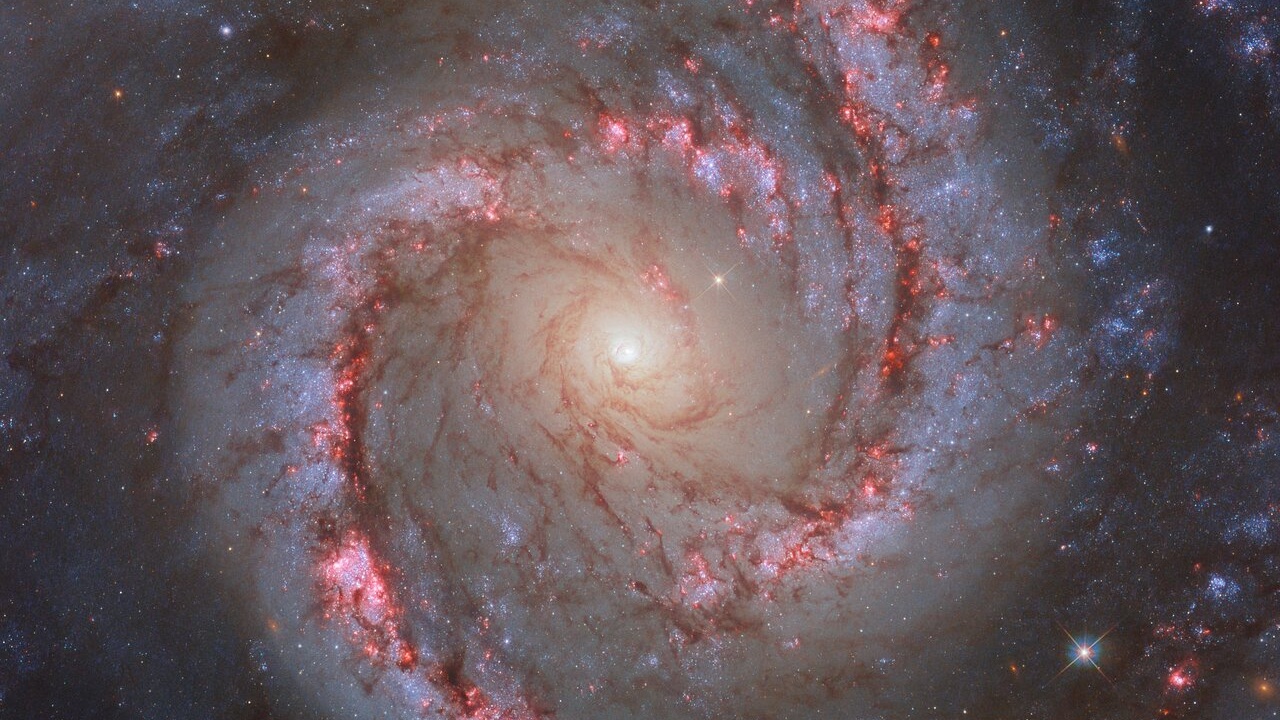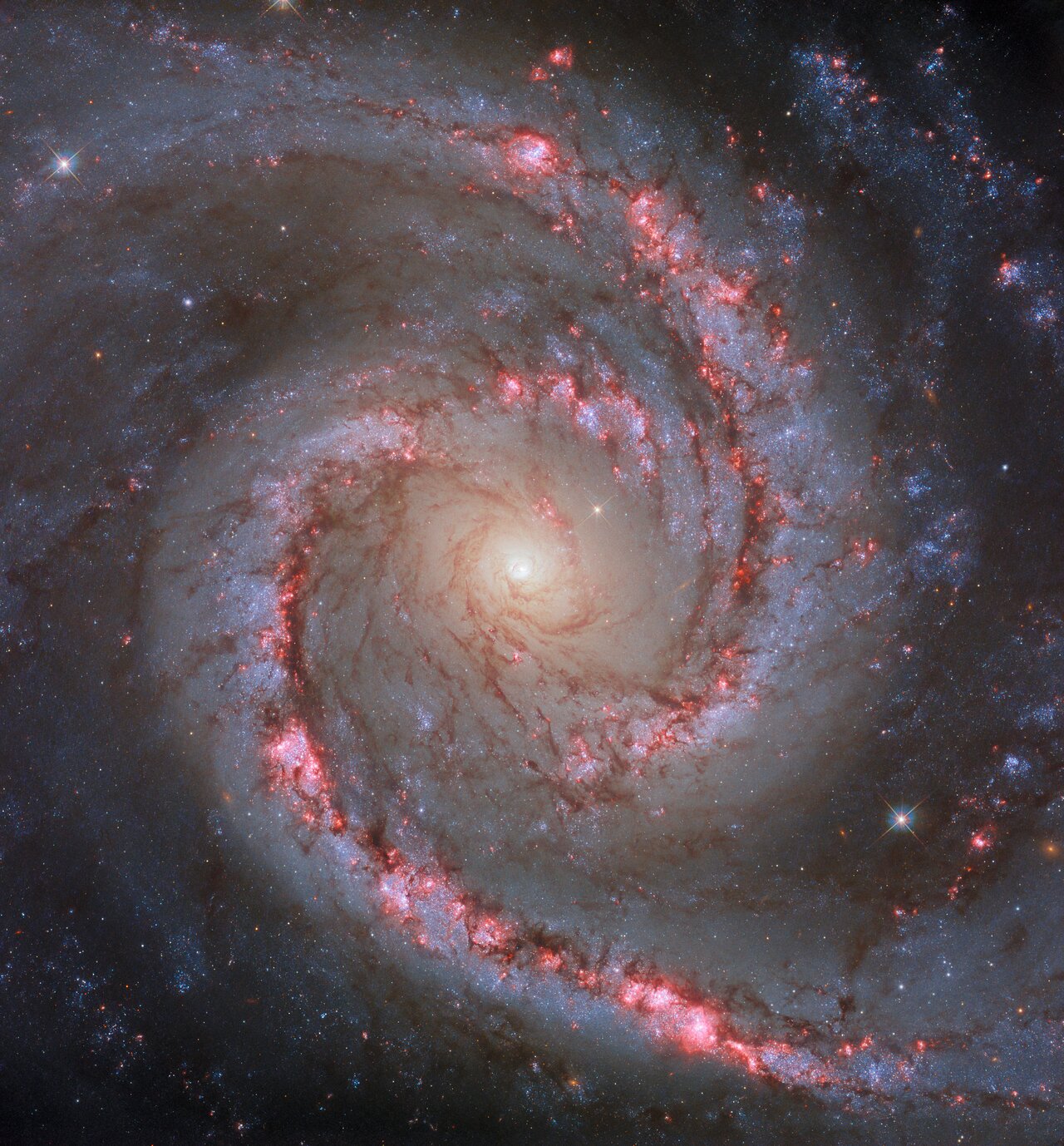
The Hubble Space Telescope has snapped a new view of a spirited galaxy dancing among the stars.
NGC 1566, also called the "Spanish Dancer" galaxy, lies about 60 million light-years from Earth in the southern constellation Dorado. This new Hubble Telescope photo shows the galaxy face-on, capturing its gorgeous and grand design.
The galaxy has two distinct and graceful spiral arms that span over 100,000 light-years; each arc half-turns from start to finish, resembling a dancer’s moving form. The spiral arms are traced by bright blue star clusters, pinkish star-forming regions and swirling interstellar dust, according to a statement from the European Space Agency (ESA).
Related: The best Hubble Space Telescope images of all time!

Observations suggest NGC 1566 is weakly-barred, making it an intermediate spiral galaxy. While the galaxy boasts a bright core, it lacks a distinct bar-shaped structure at its center.
NGC 1566 belongs to the Dorado galaxy group, which is a concentration of both spiral and elliptical galaxies bound together by gravity. The Dorado Group comprises an estimated 70 galaxies, making it much larger than the Local Group that houses our own Milky Way; the Local Group contains around 30 galaxies.
"[Galaxy] groups differ from galaxy clusters in size and mass: Galaxy clusters may contain hundreds of galaxies, whereas groups might contain several tens of galaxies," ESA officials said in the statement.
Galaxy clusters are the largest groupings of galaxies — and largest structures of any kind in the universe — to be held together by their own gravity. The Dorado Group approaches the size of a galaxy cluster, though there are differing opinions on the delineation between a galaxy group and cluster, according to the statement.
Members of the Dorado Group have changed over time as more sophisticated observation techniques enhance our view of the cosmos, adjusting our understanding of the relative sizes and proximities of galaxies along the same line of sight.
"When working out members of a galaxy group, astronomers are not necessarily equipped with the knowledge of the size of the individual galaxies, and so have to work out whether galaxies really are relatively close together in space, or whether some of them are actually much closer or much further away," ESA officials said in the statement.
ESA released the new Hubble photo of NGC 1566 online on Oct. 30.







